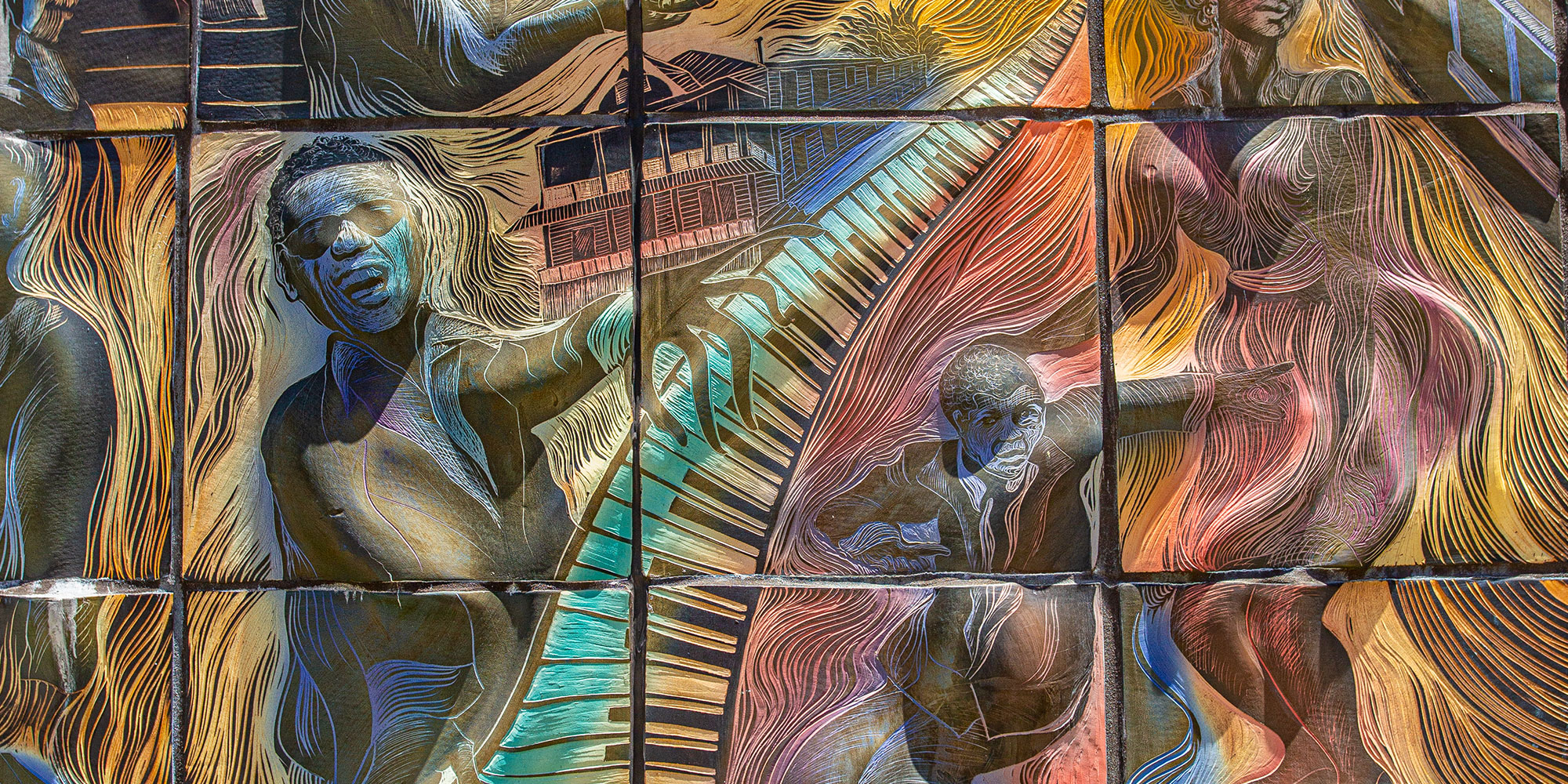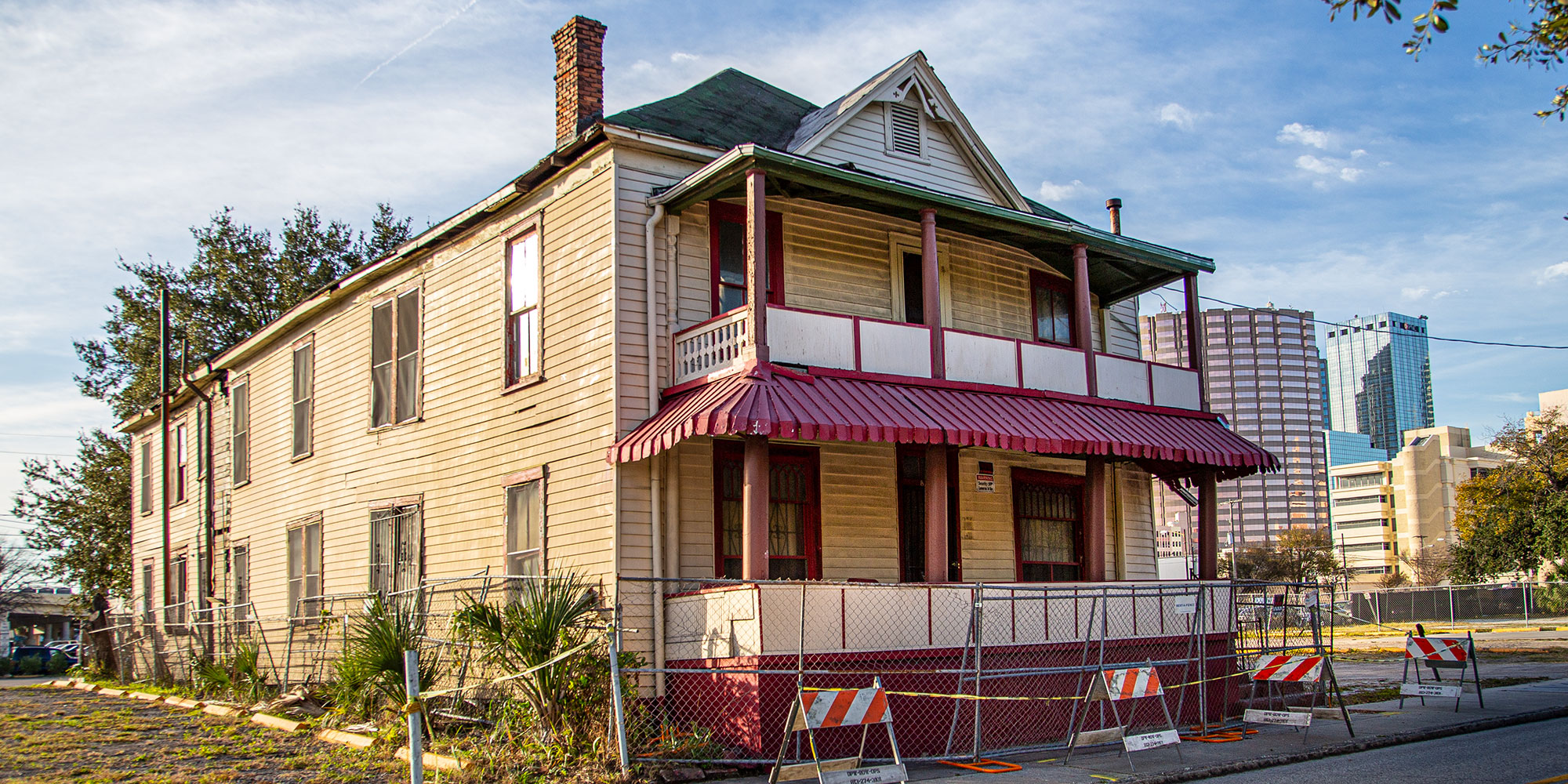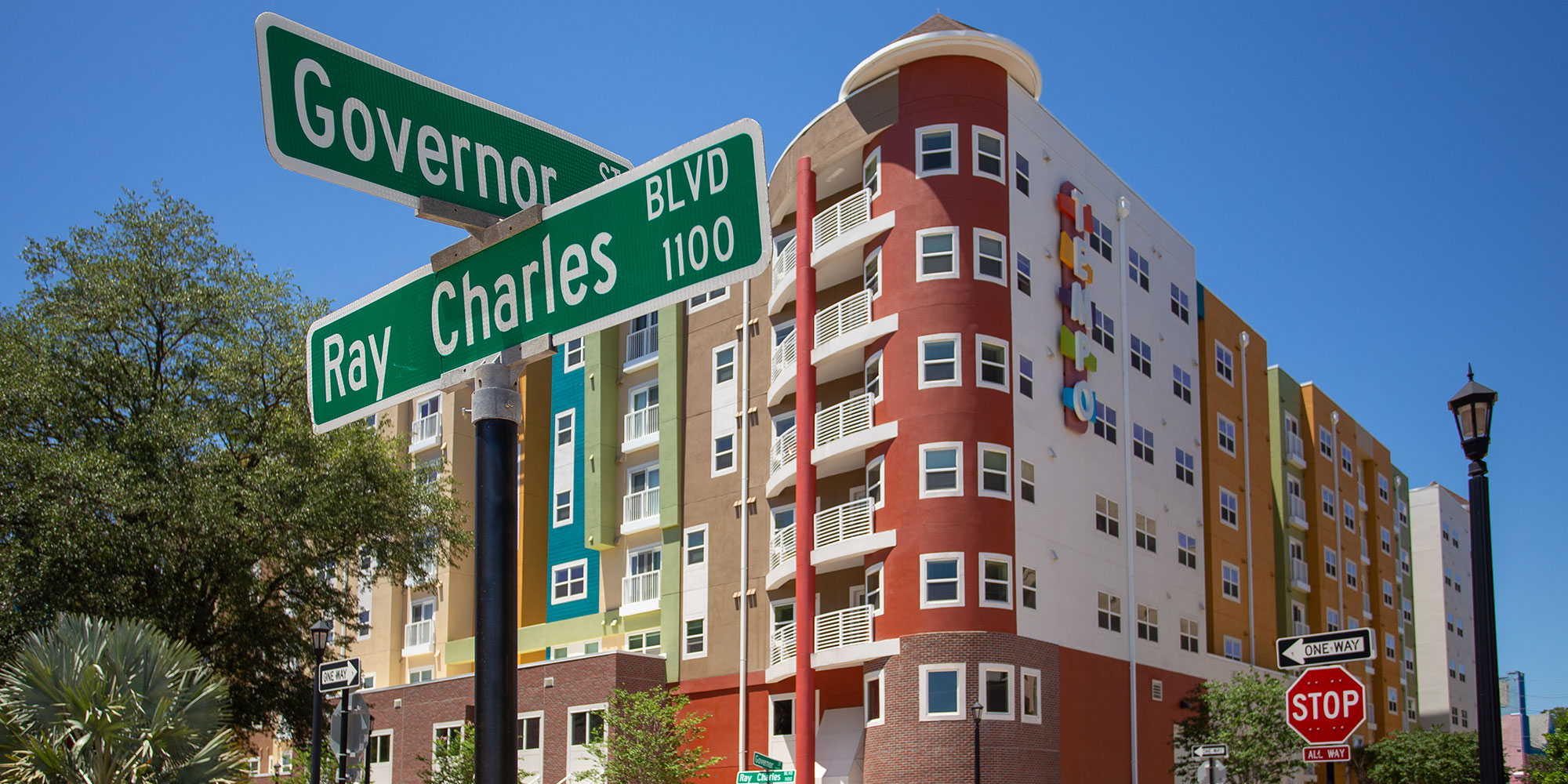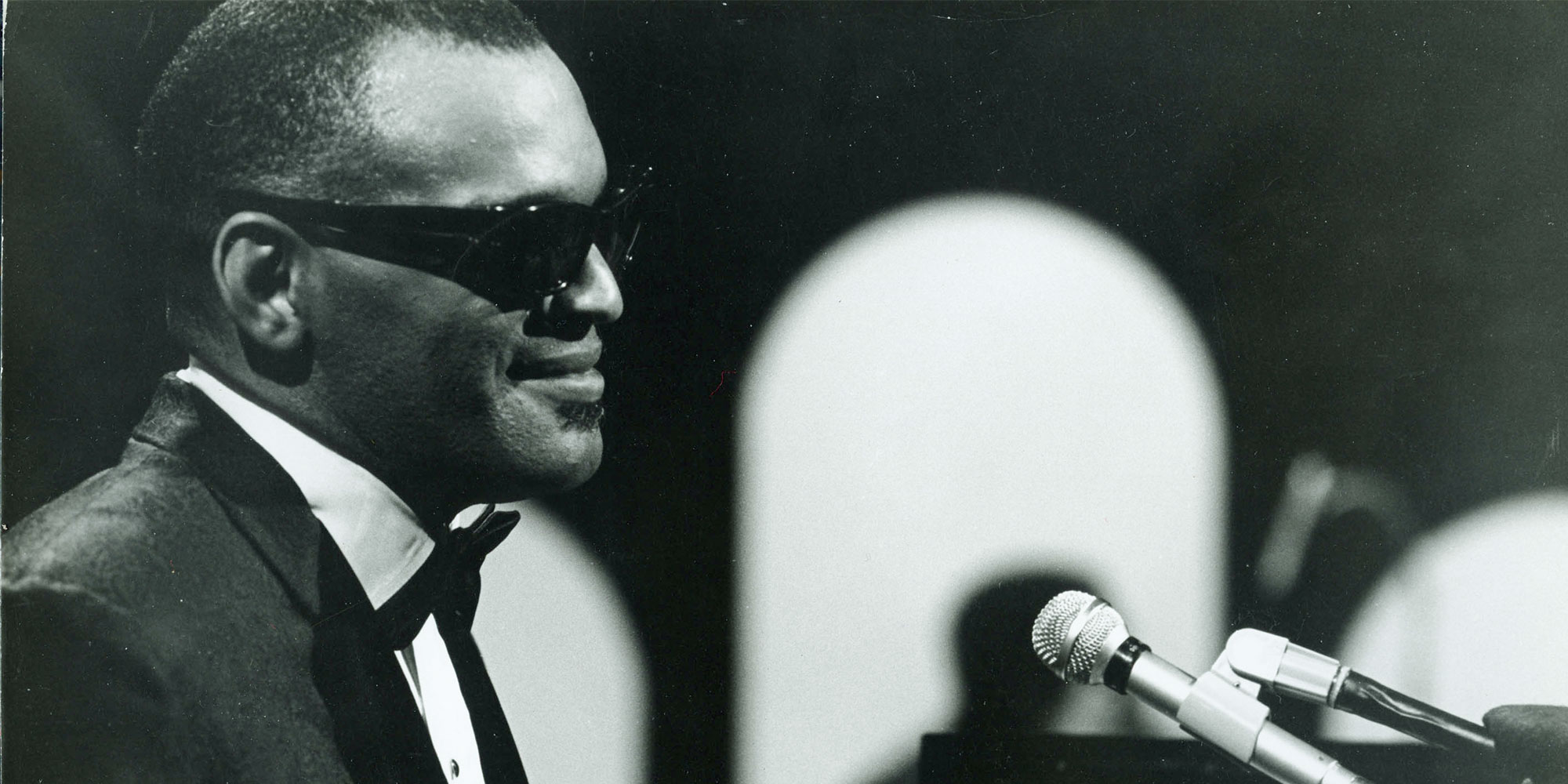Musician Ray Charles lived all over the United States in his 73 years, but in his nearly 400-page autobiography, Brother Ray, he listed just one address: 813 Short Emery St. in Tampa, Florida.
“It must have left a pretty big impression on him,” says Tampa historian Fred Hearns.
Charles is famously known as a Georgia native thanks to his song “Georgia on My Mind,” but his family actually moved to the Florida Panhandle just a few months after his birth, and the young man born Ray Charles Robinson grew up in the Sunshine State. It’s where he learned to play the piano, arrange music and eventually play gigs in cities like St. Augustine, Jacksonville and Orlando. When the work, and the money, ran out in Orlando, Charles’ friend suggested they head to the west coast of Florida.
Charles arrived in Tampa in 1947, when Central Avenue was in its heyday as the city’s center of African American life. Almost 100 black-owned restaurants, bars, clubs and theaters thrived in a district unlike anywhere else in Tampa or even Florida.

According to Michael Lydon’s book Ray Charles: Man and Music, Charles soon had a fortuitous meeting with guitar player Gossie D. McKee at the Blue Room, a popular Central Avenue music venue. McKee introduced Charles to the Simmons sisters, who had a spare room for rent in their home — 813 Short Emery St., set on a one-block stretch between what is now North Orange Avenue and Jefferson Street downtown. Most crucial to Charles’ future, the house had a piano in the parlor.
During his time in Tampa, Charles played the piano with a few different groups, including Charlie Brantley’s Honeydrippers, a jazz band, and the Florida Playboys, a country-western band. Charles was the only black member of the Playboys and was possibly the first black person to ever step foot in the Tampa honky tonks where they played their gigs, historian Hearns says.
Tampa was where Charles really began to hone his skills as a performer, singer and musical arranger and make real money doing so. It was his wages from nights on stage that allowed him to buy a wire recorder, which would become a piece of lost musical history. Because he had never heard himself sing, he recorded himself playing a few of his own compositions on the piano in the parlor of 813 Short Emery St. — his first records, made right here in Tampa.

It is unclear whether the wire spools on which the recordings were made became damaged or were lost (in his autobiography, Charles alleges they were ultimately released by minor record labels), but four songs Charles would later rerecord in a Miami studio are believed to have originated at that Tampa piano. One, originally titled “I Found My Baby There,” was undoubtedly written in the Bay area because of its better-known alternate title: “The St. Pete Florida Blues.”
Though he wrote the tune about Tampa, he chose to name it after the city on the western side of the bay because he believed people from outside of Florida would be more familiar with St. Petersburg and its beaches.
“Blacks couldn’t even go to those beaches, so that title was specifically something that white patrons could appreciate and relate to,” Hearns says.
And the “baby” in the original title? Likely Louise Mitchell, a young woman from a prominent Tampa family who was the object of Charles’ affection. Mitchell’s parents were less than thrilled with the idea of their daughter seriously dating a traveling musician; at one point, the two young lovers absconded to Miami to spite them. The couple eventually returned north and rented their own apartment in West Tampa.
While Charles found more professional and personal success in Tampa than he ever had up to that point, he knew he was destined for more.
“He had a bigger vision. He was not somebody who was satisfied just to get along or just to do OK,” Hearns says. “He knew he had something special, and he was never going to get the notoriety he wanted in Tampa and Florida.”
So in early 1948, Charles’ friend and guitarist McKee suggested the two search for opportunities elsewhere in the United States. Charles’ one request was to go as far away from Florida as possible. McKee went first, and then a few weeks later, Charles left Louise Mitchell behind and boarded a Greyhound bus. Final destination: Seattle, Washington.
Charles spent a short but formative year in Tampa, warranting an entire chapter in his autobiography (titled “Stomping Around Tampa”). And his legacy in the city lives on; in 1949, Louise Mitchell gave birth to Charles’ first child, Evelyn, who still lives here.
So why, then, isn’t the story of one of the most influential musicians of the mid-20th century beginning his career a bigger part of Tampa’s history?
“You tell me,” Hearns says with a laugh. “There ought to be a sign there at 813 Short Emery — ‘Ray Charles lived here.’ Why isn’t there?” he adds. Currently, the city’s only public tributes to Charles are a pair of murals at downtown’s Perry Harvey Sr. Park and a street name in the adjacent Encore housing development.

It’s not necessarily a matter of racial prejudice, either. Where is the sign outside the Floridan Palace Hotel saying “Elvis Presley slept here” or the plaque at Curtis Hixon Park denoting where Janis Joplin was arrested? Hearns asks.
“We have not done a good job of celebrating our musical history in Tampa, Florida,” he says.
For now, we’ll have to live with a brief moment of glory in the 2004 film Ray. Charles, played by Jamie Foxx, disembarks from the Greyhound bus in Seattle and meets music producer Quincy Jones.
“Where are you from?” Jones asks.
“I just came in from Tampa,” Charles tells him.



